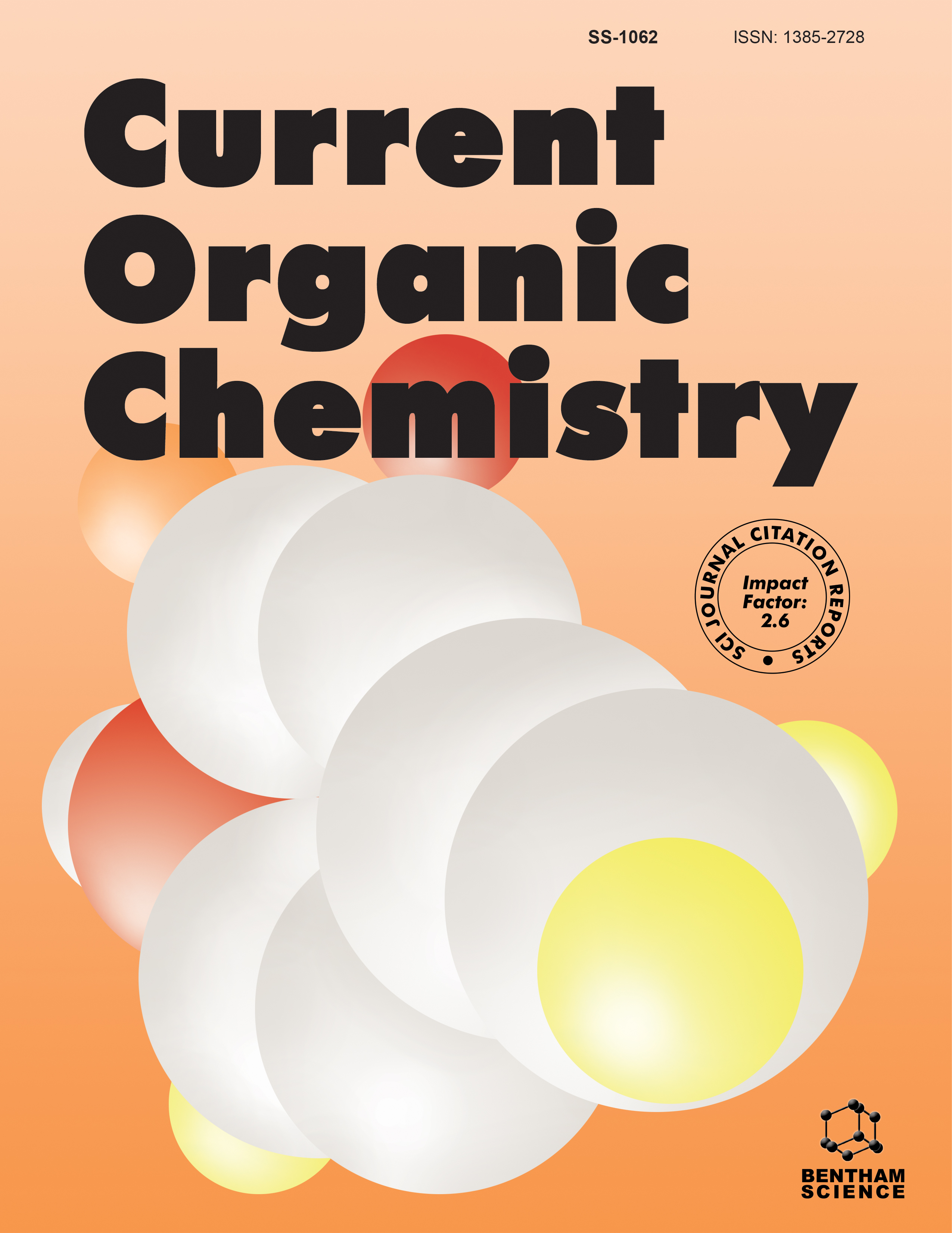- Home
- A-Z Publications
- Current Organic Chemistry
- Previous Issues
- Volume 26, Issue 22, 2022
Current Organic Chemistry - Volume 26, Issue 22, 2022
Volume 26, Issue 22, 2022
-
-
Palladium-Catalyzed C-N Coupling in the Synthesis of Benzodiazepines
More LessAuthors: Pooja Grewal and Navjeet KaurThis review article is focused on the reactions, which include the syntheses of various classes of benzodiazepines in the presence of a Pd catalyst. The catalyst used here belongs to the transition metal group and nowadays, there is keen interest in numerous methods for the coupling reaction in the presence of a catalyst to prepare the biologically active heterocyclic compounds. In particular, the use of domino reactions as inter- or intramolecular processes is reported as an efficient and eco-compatible tool to obtain differently functionalized benzodiazepines. 2,3-benzodiazepines having pharmaceutical interest are synthesized via asymmetric catalysis. The catalyst used in this synthesis is palladium-chiral bidentate phosphine complex and thiazolium-derived carbine. The 1,3-benzodiazepines are prepared by A3 coupling. In this reaction, the propargylamine was first added to the isocyanates. After that, hydroxylation of alkyne occurs in the presence of a Pd catalyst in a one-pot manner to yield the 1,3-benzodiazepines.
-
-
-
Calixarene: The Dawn of a New Era in Forensic Chemistry
More LessAuthors: Himali Upadhyay, Uma Harikrishnan, Devanshi Bhatt, Namrata Dhadnekar, Kapil Kumar and Manthan PanchalGlobally, rapid, ultrasensitive, and ultraselective detection of forensic evidence is critically required for social security and support. In the past four decades, calixarenes have been the focus of intensive research in the invention of several extractants, transporters, stationary phases, electrode ionophores, and optical and electrochemical sensors. This review is ardent about calixarene, a new class of selective and sensitive forensic sensors. It has become clear that calix[n]arenes are particularly attractive building blocks for supramolecular chemistry due to their synthesis on a large scale, distinctive concave molecular architecture, tunable inner cavity size, exceptional derivatization capabilities, and a broad range of applications. This paper opens up new avenues for the creation of on-site detection kits for forensic evidence, which will speed up the detection procedure.
-
-
-
An Update on the Recent Green Synthetic Approaches for Imidazo[1,2-a] Pyridine: A Privileged Scaffold
More LessAuthors: Keval Bhatt, Dhara Patel, Mrudangsinh Rathod, Ashish Patel and Drashti ShahImidazo[1,2-a]pyridine is a fused bicyclic heterocycle that is known as a "drug prejudice" scaffold because of its numerous uses in organic and medicinal chemistry for the development of new drugs. As an outcome, numerous techniques for synthesizing this important class of compounds have been established. Some methods, however, are associated with toxic and corrosive catalysts, longer reaction times, poor yields, lower purity, and byproducts in addition to the desired product. Green synthetic methods, which include microwave- assisted synthesis, catalyst-free, solvent-free, green solvent-based synthesis, mechanochemistry, and many others, are used to reduce the usage and production of harmful organic substances. These techniques improve reaction efficiency compared to conventional ones and also reduce the utilization and production of hazardous chemicals. Due to the implication of the imidazo[1,2-a]pyridine backbone as a biologically active ubiquitous fragment and the current demands of reducing toxic solvents, catalysts, and energy consumption, this review focuses on providing comprehensive highlights of the recent green synthetic pathways for imidazo[1,2-a]pyridine.
-
-
-
Synthetic Methods of 1H-Pyrazolo[1,2-b]Phthalazine Derivatives
More LessThis review deals with the synthetic methods of pyrazolo[1,2-b]phthalazine derivatives using one-pot multi-component reactions via modern and traditional methods. The synthetic methods are subdivided into groups according to the type of reactants e.g. (1) one-pot three-component reaction of 2,3-dihydrophthalazine-1,4-dione, aldehydes and acetonitriles; (2) one-pot three-component reaction of 2,3-dihydrophthalazine-1,4-dione, aldehydes and aroyl acetonitriles; (3) one-pot three-component reaction of 2,3-dihydrophthalazine-1,4-dione, aldehydes and acetylacetone or 4-hydroxy-2H-chromen-2-one or acetylene derivatives; (4) one-pot four-component condensation reaction of phthalimide, hydrazine hydrate, aldehydes and acetonitriles; (5) one-pot four-component reaction of phthalic acid, hydrazine hydrate, indole-3- carbaldehyde and acetonitriles; and (6) one-pot three-component condensation reaction of 2,3- dihydrophthalazine-1,4-dione, aldehyde, and dimedone derivatives. Moreover, the various methods were reported.
-
Volumes & issues
-
Volume 29 (2025)
-
Volume 28 (2024)
-
Volume 27 (2023)
-
Volume 26 (2022)
-
Volume 25 (2021)
-
Volume 24 (2020)
-
Volume 23 (2019)
-
Volume 22 (2018)
-
Volume 21 (2017)
-
Volume 20 (2016)
-
Volume 19 (2015)
-
Volume 18 (2014)
-
Volume 17 (2013)
-
Volume 16 (2012)
-
Volume 15 (2011)
-
Volume 14 (2010)
-
Volume 13 (2009)
-
Volume 12 (2008)
-
Volume 11 (2007)
-
Volume 10 (2006)
-
Volume 9 (2005)
-
Volume 8 (2004)
-
Volume 7 (2003)
-
Volume 6 (2002)
-
Volume 5 (2001)
-
Volume 4 (2000)
Most Read This Month


